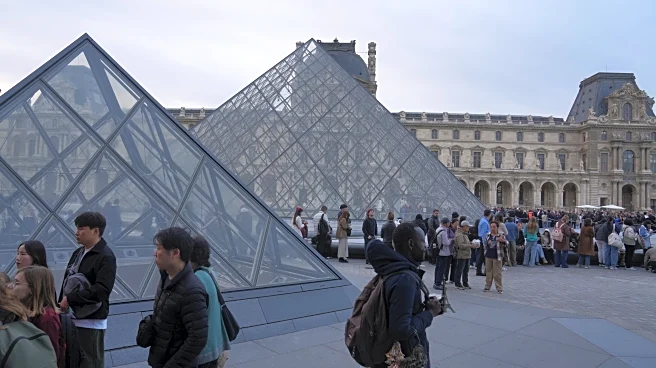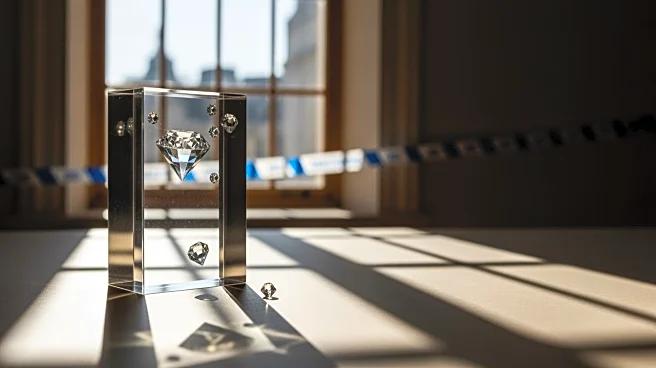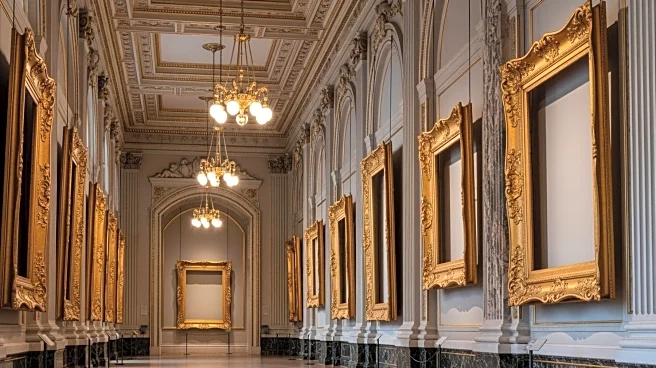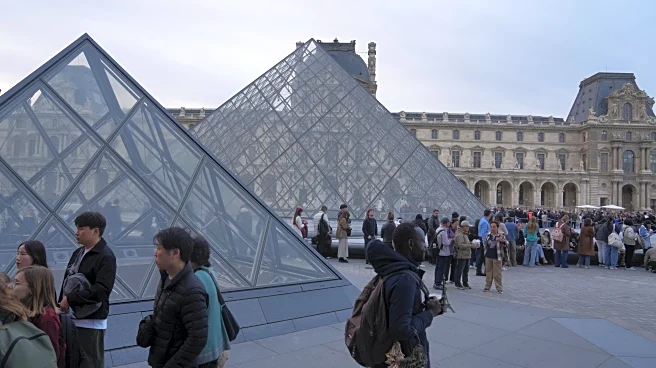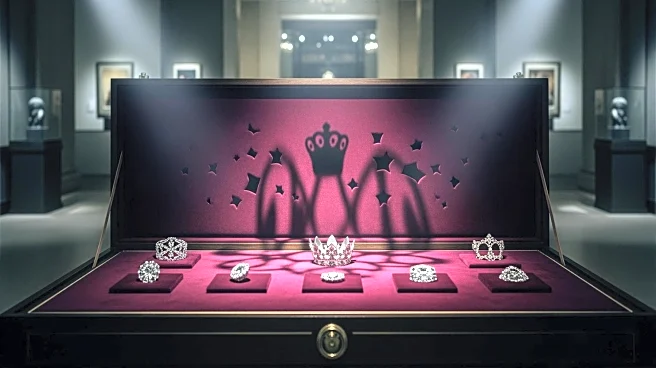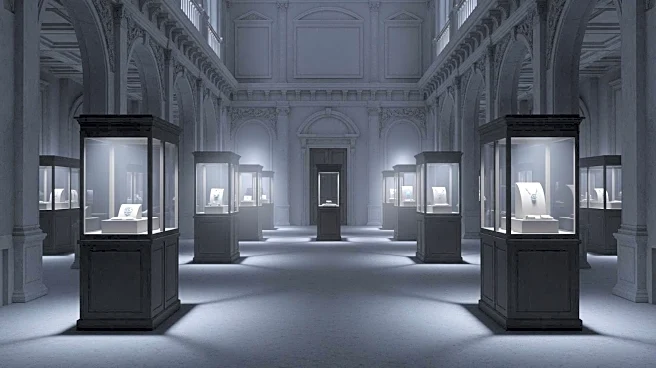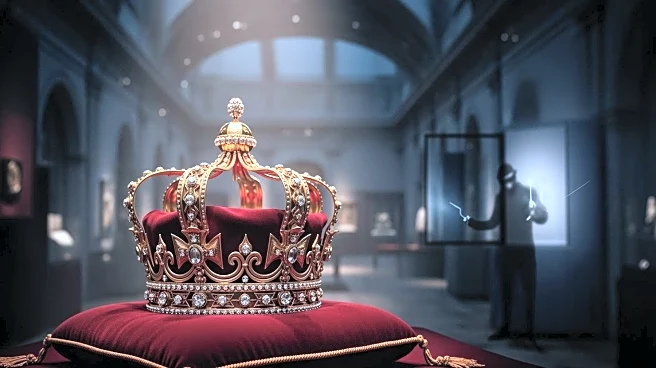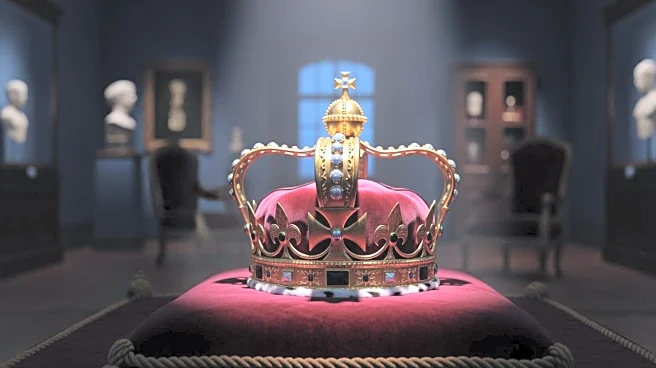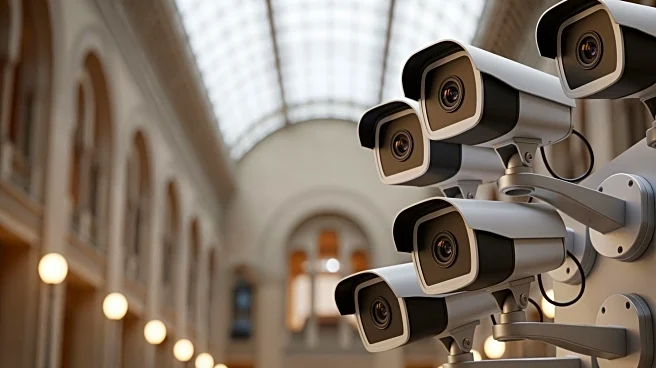What's Happening?
The Louvre Museum in Paris experienced a significant theft on October 19, marking one of the most audacious robberies since its establishment as a public institution during the French Revolution. Four
suspects used a vehicle equipped with a mechanical ladder to access the Gallery of Apollo, cutting through a window with power tools. Once inside, they threatened guards and broke into display cases containing France's crown jewels, valued at €88 million ($102 million). The theft was completed in under eight minutes, with the suspects escaping on scooters. French President Emmanuel Macron condemned the theft as an attack on cultural heritage.
Why It's Important?
The theft of the crown jewels from the Louvre Museum represents a significant loss to France's cultural heritage, highlighting vulnerabilities in security at major cultural institutions. The stolen items, including a sapphire diadem and pearl tiara, are historically significant, having belonged to figures such as Queen Hortense and Empress Eugénie. The incident raises concerns about the protection of valuable cultural artifacts and may prompt museums worldwide to reassess their security measures. The theft also underscores the ongoing threat to cultural heritage from organized crime.
What's Next?
In response to the theft, French authorities are likely to intensify efforts to recover the stolen jewels and apprehend the suspects. The Louvre Museum may implement enhanced security protocols to prevent future incidents. The theft could lead to increased collaboration between international law enforcement agencies to address the trafficking of stolen cultural artifacts. Additionally, the incident may spark discussions on the need for improved security measures at museums globally.
Beyond the Headlines
The theft of the crown jewels from the Louvre Museum raises ethical questions about the preservation and protection of cultural heritage. It highlights the challenges faced by museums in balancing public access with security. The incident may lead to a reevaluation of how cultural institutions manage and display valuable artifacts, considering both their historical significance and vulnerability to theft.


